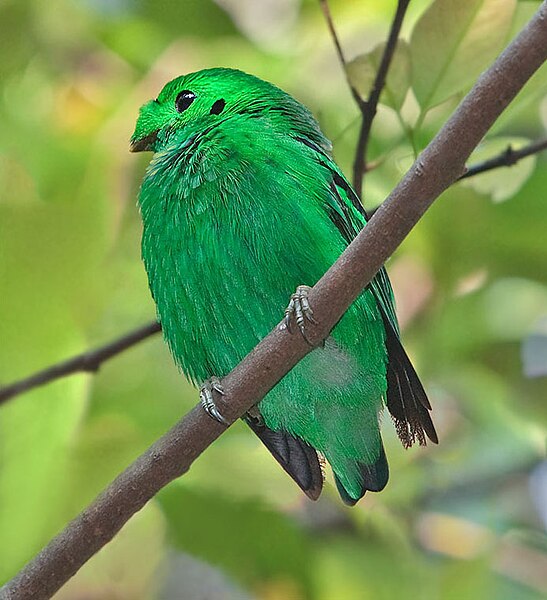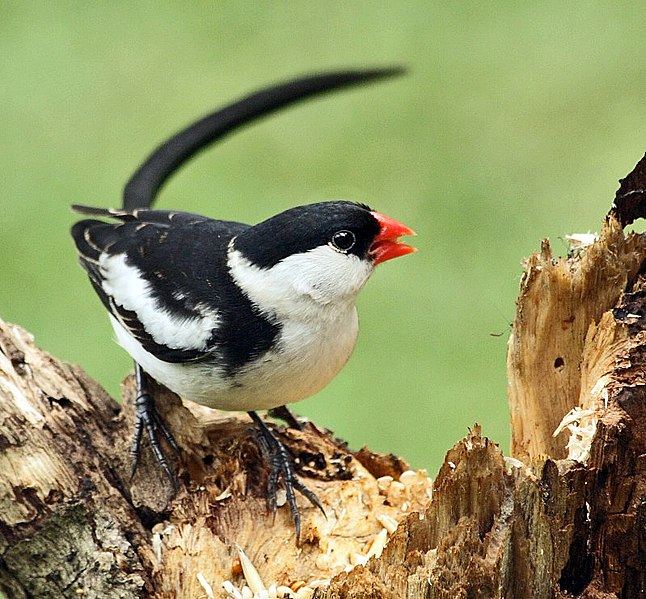 Uganda’s Bwindi Impenetrable National Park is best known as the last stronghold of the Mountain Gorilla. However, this troubled African wildlife paradise is also home to at least 43 finch species, many of which face a future as uncertain as that of the Mountain Gorilla. While most bird enthusiasts are aware of the problems facing Africa’s parrots (please see this article), the plight of the continent’s finches receives far less attention. Through birding trips and hands-on projects, the Rare Finch Conservation Group is working to change that situation, but it’s been a long, uphill battle.
Uganda’s Bwindi Impenetrable National Park is best known as the last stronghold of the Mountain Gorilla. However, this troubled African wildlife paradise is also home to at least 43 finch species, many of which face a future as uncertain as that of the Mountain Gorilla. While most bird enthusiasts are aware of the problems facing Africa’s parrots (please see this article), the plight of the continent’s finches receives far less attention. Through birding trips and hands-on projects, the Rare Finch Conservation Group is working to change that situation, but it’s been a long, uphill battle.
Troubles and Opportunities
The Rare Finch Conservation Group (RFCG) was formed in 2005, but has already made significant progress in addressing the problems that face Uganda’s finches. Mountain Gorillas act as “umbrella species” for the region’s wildlife – concern for them indirectly benefits many animals – but the RFCG believes that finches and other small birds deserve more direct conservation action. The organization is currently formulating a plan to study the needs of a locally-endangered bird, Shelly’s Crimsonwing.
The national park is located in Uganda, but the Impenetrable Forest extends into the Democratic Republic of Congo. The forest’s location on the edge of the Great Rift Valley, and adjacent to Virunga National Park, renders it one of the world’s most biologically diverse and unique regions. Unfortunately, armed conflicts, poverty, and political instability have long been a fact of life there, although there are now some bright spots.
A Finch Diversity Hotspot
An astounding 43 finch species have been observed in the park, and others likely await discovery. Among them, birders and finch breeders will recognize both pet trade and rarely-seen species, including the Yellow Bishop, Grosbeak Weaver, Pin-Tailed Whydah, Black-Headed Waxbill, Green-Backed Twinspot, Bronze Manikin, Oriole Finch, Quail Finch and Golden Breasted Bunting. The area may, in fact, host more finches than anywhere else on earth.
While finches are the highlight of the RFCG’s birding trips, broadbills, hornbills, turacos and over 350 other species are also present. Expedition participants may also be treated to such rare finds as Giant Forest Hogs, African Golden Cats or any of over 120 other mammals.
Traditional Medicine and Witchcraft
 I was glad to see that the RFCG’s excursions went beyond birding and offered options to visit local bird breeders and traditional medicine markets. Both affect finch conservation, and direct contact with them may give visitors a deeper understanding of the many complex issues involved.
I was glad to see that the RFCG’s excursions went beyond birding and offered options to visit local bird breeders and traditional medicine markets. Both affect finch conservation, and direct contact with them may give visitors a deeper understanding of the many complex issues involved.
For example, reliance upon wildlife as food and medicine, and the use of witchcraft, continue to be important factors even in large cities such as Johannesburg. Seeing this first hand would seem an useful means of helping people from outside the region to think of conservation in practical, rather than ideal, terms.
Further Reading
The Land and Wildlife of the Bwindi Impenetrable Forest
Conserving Hawaii’s Finches and other Birds
Calyptomena viridis image referenced from wikipedia and originally posted by Doug Janson
Vidua macroura image referenced from wikipedia and originally posted by Alan Manson
 That Bird Blog – Bird Care and History for Pet Birds
That Bird Blog – Bird Care and History for Pet Birds



